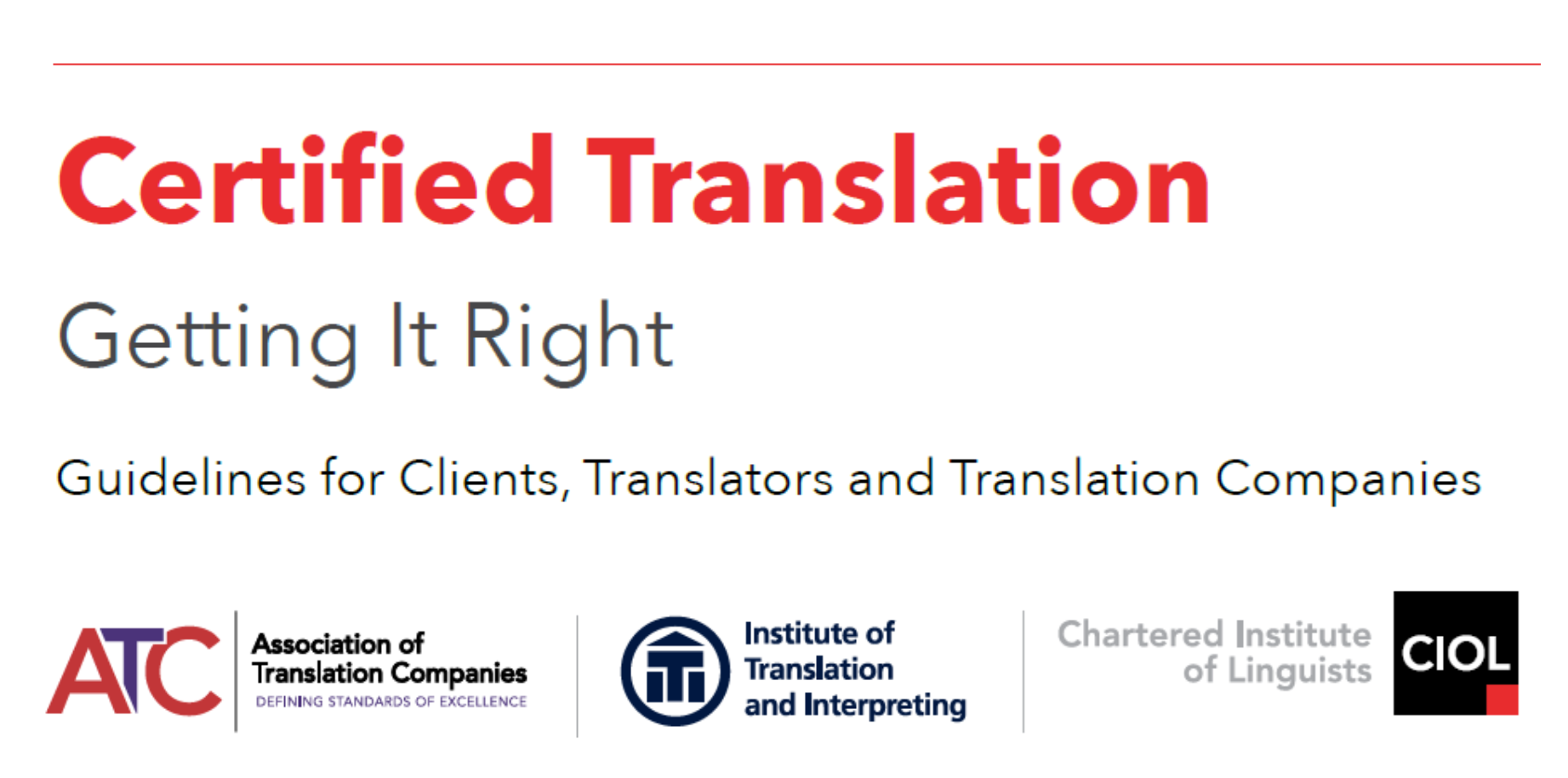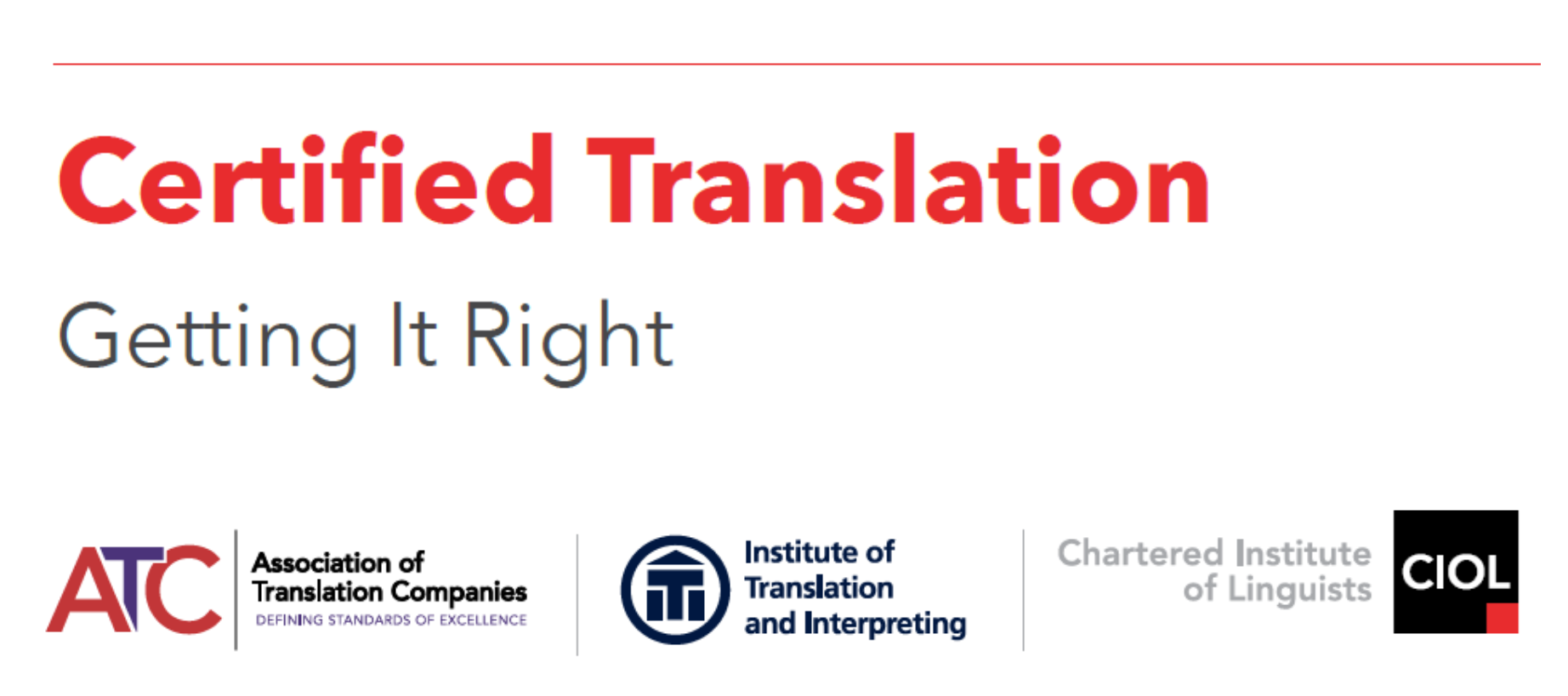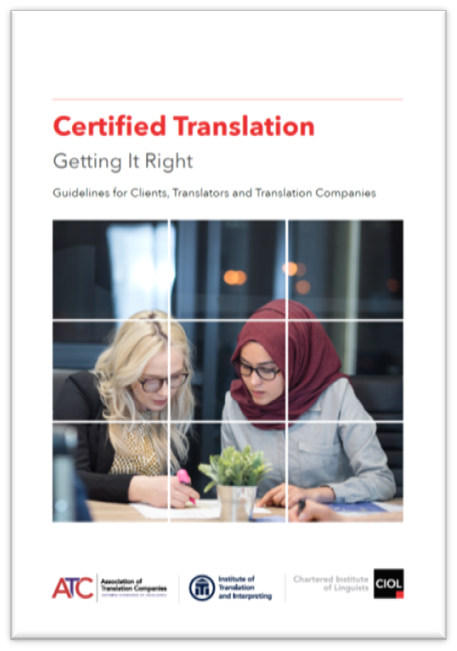When members of public, businesses and public authorities need a certified translation of a document that is not in English, it is important to choose a qualified, registered translator or translation company.
UK Government requires translators to confirm their identity, name and address in writing as set out at https://www.gov.uk/certifying-a-document.
Use a qualified, registered translator or translation company
All parties, and especially public authorities can reduce the risk of error or omission by only using a translator or translation company with a clear affiliation to a recognised professional body or association such as the Chartered Institute of Linguists, the Institute of Translation and Interpreting (ITI) and the Association of Translation Companies (ATC).
Find the right professional for your translation
CIOL, ITI and ATC maintain easily accessed public registers of accredited translators and companies:
Get a Certificate
As per our guidance the translation document is best annotated or accompanied by a certificate with at least the following information:
- The translation is ‘a true and accurate translation of the original document’
- The date of the translation
- The name and contact details of the translator or a representative of the translation company
Take Confidence in Quality
Businesses, public service and UK Government agencies can take confidence in the accreditation processes for appropriately experienced professional translator members of the Chartered Institute of Linguists and the Institute of Translation and Interpreting (MITI, FITI and Corporate LSP members) and also in the quality assurance processes of ATC member companies (Accredited).
All three organisations endorse each other’s guidance for certifying a translation as here on the ATC and ITI websites.

This document outlines best practices and guidelines on certifying translations in the United Kingdom. It is intended for use with individuals and organisations who require certified translations, as well as translators and translation companies producing certified translations.
The guidance is endorsed by the UK’s leading language industry associations, the Association of Translation Companies (ATC), the Institute of Translation and Interpreting (ITI) and the Chartered Institute of Linguists (CIOL).



